

EXPLORE BY TOPIC:
  Our top 10 resources
Our top 10 resources
  Childhood / Early Life
Childhood / Early Life
  Chronic Stress
Chronic Stress
  Education
Education
  Food Security
Food Security
  Genetics
Genetics
  Jobs & Work
Jobs & Work
  Housing / Neighborhoods
Housing / Neighborhoods
  Income & Wealth
Income & Wealth
  Race / Racism
Race / Racism
  Social Inclusion
Social Inclusion
  Policy & Change
Policy & Change





Buy the DVD
e-Newsletter
FAQs
Contact Us
Site Map
Home

|
 |


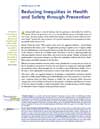 Reducing Inequities in Health and Safety through Prevention (pdf) Reducing Inequities in Health and Safety through Prevention (pdf) 
POLICY MEMO from Prevention Institute and the Health Policy Institute of the Joint Center for Political and Economic Studies, January 23, 2009
Advancing health equity to ensure all Americans have the opportunity to lead healthy lives should be a priority. We have an opportunity to do so in a way that alleviates pressure on the health system and saves money. This memo was developed in January '09 to provide background and recommendations for developing a comprehensive, prevention-oriented strategy for acheiving health equity.
|
 |
 Reducing Racial and Social Inequalities in Health: The Need for a New Approach Reducing Racial and Social Inequalities in Health: The Need for a New Approach 
SCHOLARLY ARTICLE by S. Leonard Syme, Health Affairs 2008 It is well known that people in racial and ethnic minority groups and in lower social-class positions have higher morbidity and mortality rates from virtually every disease. To effectively deal with the problem, we will need to adopt a more appropriate conceptual model that focuses on the fundamental determinants of health, we will need to understand how important this is for all Americans as a society, and we will need to better deal with the issues people care about: their children, homes, jobs, safety, education, families, retirement, and future prospects.
Abstract only. Subscription required to read full text. |
 |
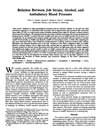 Relation Between Job Strain, Alcohol, and Ambulatory Blood Pressure Relation Between Job Strain, Alcohol, and Ambulatory Blood Pressure 
SCHOLARLY ARTICLE, Schnall, et al., 1992 This key study finds that job strain increases blood pressure in men not only at work, but at home and while sleeping. It also finds that regular use of alcohol further raises daytime blood pressure, but only among those in high-strain jobs. |
 |
 Remembering the Marshall Islands Remembering the Marshall Islands 
ARTICLE by Jane Goodall, Rick Asselta, June 30, 2006 Opinion piece commemorating anniversary of Bravo detonation, 60 years after the commencement of U.S. nuclear testing in the South Pacific, urging us to remember the health effects of nuclear testing on the residents of the Marshall Islands. |
 |
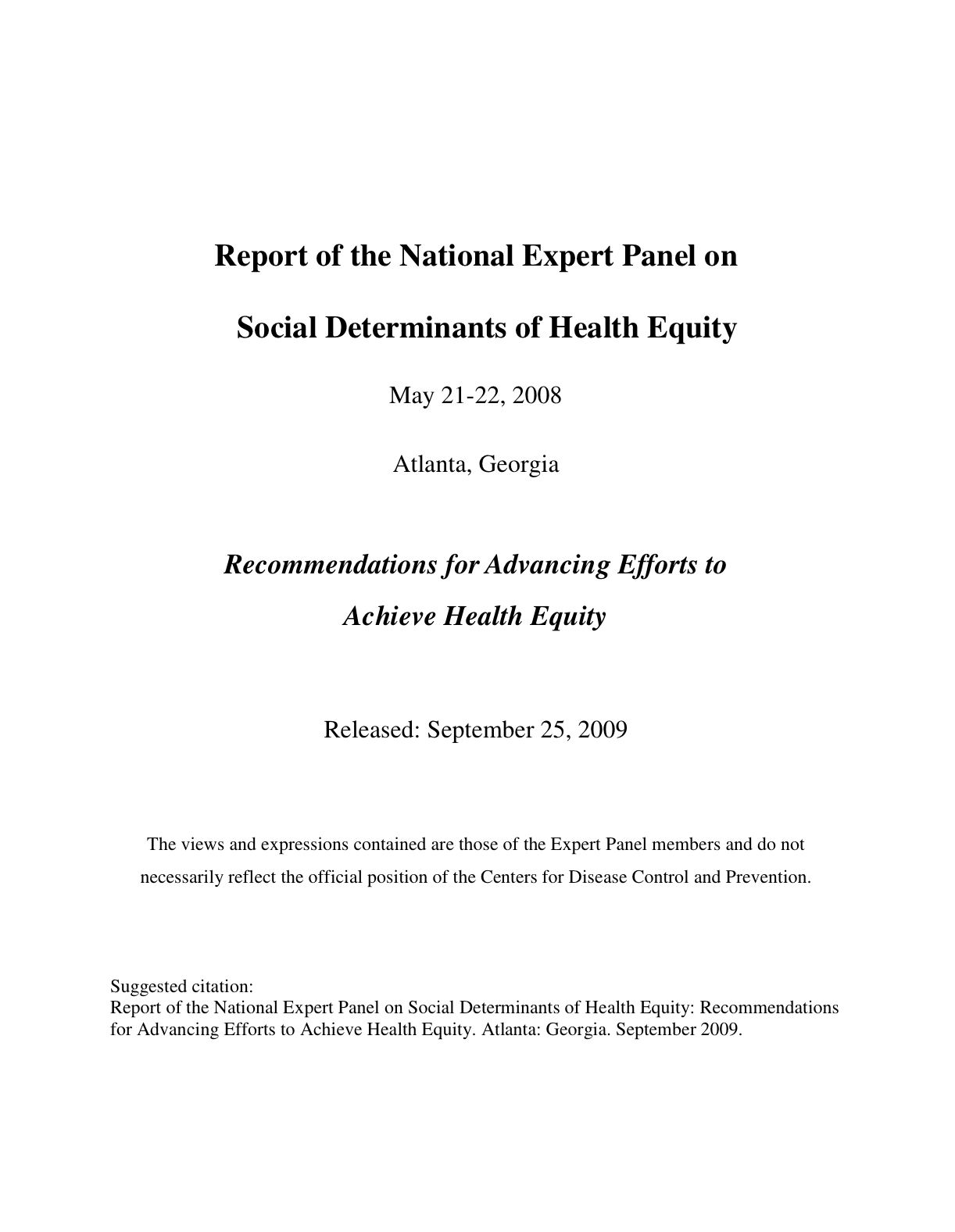 Report of the National Expert Panel on Social Determinants of Health Equity: Recommendations for Advancing Efforts to Achieve Health Equity Report of the National Expert Panel on Social Determinants of Health Equity: Recommendations for Advancing Efforts to Achieve Health Equity 
This report encapsulates the critical thinking, key arguments and recommendations of nationally recognized experts in the area of social determinants of health equity. A principle thesis of the Expert Panel is that the inequitable distribution of resources needed for health is the major contributor to persistent health inequities. These experts called to account conditions and processes, including class disadvantage and racism, that prevent many Americans from enjoying the health and long life that affluent and privileged citizens take for granted. Many of the strategies for addressing social determinants of health equity fall outside current public health practice but not outside the profession’s historic role in public policy decisions that promote social justice. |
 |
 Research: Green areas lower health inequities between rich, poor Research: Green areas lower health inequities between rich, poor 
NEWS ARTICLE, USA Today, Nov 11, 2008 Health inequalities between rich and poor people are much lower in areas that have lots of green space, such as parks, forests and playing fields, a large British study finds. |
 |
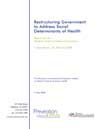 Restructuring Government To Address Social Determinants Of Health (PDF) Restructuring Government To Address Social Determinants Of Health (PDF) 
REPORT from the Prevention Institute and Trust for America's Health This report from the Healthier America California Convening in Sacramento, CA, February 2008 makes recommendations to enhance the federal government's role in addressing the underlying determinants of health. Recommendations include redirecting some funding to focus on prevention, training for staff at all levels to understand the health implications of policy, and establishing a national-level data gathering and monitoring system. |
 |
 Rethinking MCH: The Life Course Model as an Organizing Framework Rethinking MCH: The Life Course Model as an Organizing Framework 
U.S. Department of Health and Human Services, Health Resources and Services Administration This concept paper is a first step in assisting the Health Resources and Services Administration, Maternal and Child Health Bureau explore how life course theory (LCT) might be used as a strategic planning framework, guiding the work of MCHB, its grantees, and partners over the next 5 years. Four core life course concepts are identified – timeline, timing, environment and equity – that can be used to redirect public health practice for greater impact. The paper briefly introduces the implications of these concepts for MCHB strategic planning. Further, it proposes that in order to effectively advance a life course approach, MCHB will need to develop a strategic agenda for change, working simultaneously in three broad arenas: (1) knowledge base, (2) program and policy strategies, and (3) political will. Finally, examples provided throughout the paper highlight how a shift to a life course framework might be applied in each of these areas. |
 |
rising Inequality, Declining Health: Health Outcomes and the Working Poor 
How healthy are people who are working but still can’t make ends meet? How does their health compare to those who are working and have good incomes? How do both of those health outcomes compare to those who are poor and not working? This report shows a widening gap between the health of people who are living in poverty and working and those whose work provides sufficient incomes. This suggests that worsening labour market conditions, a weakened social safety net and increasing income inequality are accompanied by rising inequities in health. |
 |
 Ron Sims: The King County Equity and Social Justice Initiative Ron Sims: The King County Equity and Social Justice Initiative 
TRANSCRIPT of a speech by Rom Sims, King County Executive, March 2008 In a speech for the CDC Health Transformation Lecture Series, Mr. Sims explains how his office has made health equity central to its work - across sectors and in partnership with communities, business, and local agencies - and makes the case for the CDC to use its considerable influence and reach to promote and support health equity nationally. |
 |
 Running from Despair Running from Despair 
NEWS ARTICLE by Joe Spring, New York Times, February 16, 2008 A positive look at how some young people living on reservations are becoming involved in cross country running. Wings of America, a team of Native American athletes from around the country that has won 20 national titles since 1988, is also an NGO that works to counter the high rates of diabetes, obesity, alcoholism, and suicidal depression on reservations. |
 |
 San Francisco Paid Sick Leave Ordinance (pdf) San Francisco Paid Sick Leave Ordinance (pdf) 
PRESENTATION SLIDES, SF Office of Labor Standards Enforcement, January 11, 2007 Passed by a 61% majority vote, Proposition F required that all employers must provide paid sick leave to each employee who performs work in San Francisco, starting in 2007. This pdf of a slideshow explains some of the background and details of the ordinance, and provides statistics and details regarding its importance. |
 |
 Savoring the Future - Upscale Restaurant Supports Gila River Farming Revival Savoring the Future - Upscale Restaurant Supports Gila River Farming Revival 
NEWS ARTICLE in Indian Country Today With the return of their water in a landmark settlement, the Pima Indians of southern Arizona are returning to their agricultural roots. Upscale eateries like Kai Restaurant on the edge of the Gila River Indian Community reservation are working with tribal farmers to obtain local, seasonable produce - a win-win situation for chefs and growers alike. |
 |
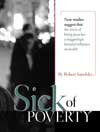 Sick of Poverty Sick of Poverty 
ARTICLE by Robert Sapolsky, Scientific American, December 2005 Research has conclusively demonstrated a correlation between socio-economic status (SES) and health outcomes, but traditional explanations based on health care access and the incidence of dangerous or harmful lifestyles do not fully account for this relationship. Recent studies highlight the relevance of psychosocial stress: perceiving a lack of control and predictive information regarding stressors, having few outlets for frustration, perceiving a worsening of one’s situation, and lacking social support structures. Other controversial research indicates that high inequality levels within a given community worsen health outcomes for all individuals, suggesting that one’s perception of her poverty is as important as her absolute poverty level.
NOTE: This article is only available via subscription or paid download. |
 |
 Social conditions, health equity, and human rights Social conditions, health equity, and human rights 
Paula Braveman This paper explores connections between human rights and health equity, focusing particularly on the implications for both fields of the link between social conditions and both health and health inequalities. Human rights laws and principles and health equity concepts and technical approaches can be powerful tools for mutual strengthening, not only by contributing toward building awareness and consensus around shared values, but also by guiding analysis and strengthening measurement of both human rights and health equity. |
 |
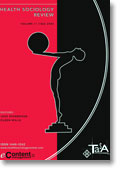 Social determinants of child health and well-being Social determinants of child health and well-being 
Health Sociology Review The notion of ‘human rights to health’ is gaining increasing recognition in research and few would disagree with this social justice principle and ideal. But it is time to think of how these rights can be guaranteed and protected in concrete terms and there is a critical need to begin cross-disciplinary dialogues between health, law, politics and health economics to map out the path to reaching this goal. |
 |
 Social Determinants of Health: The Canadian Facts Social Determinants of Health: The Canadian Facts 
Juha Mikkonen and Dennis Raphael The primary factors that shape the health of Canadians are not medical treatments or lifestyle choices but rather the living conditions they experience. This report considers 14 social determinants of health and outlines why they are important; how Canada is doing in addressing them; and what can be done to improve their quality. The purpose of the document is to provide promote greater awareness of the social determinants of health and the development and implementation of public policies that improve their quality. |
 |
 Social determinants of health: the community as an empowered partner Social determinants of health: the community as an empowered partner 
ARTICLE by S. Leonard Syme, Preventing Chronic Disease, January 2004 "While we in public health know the importance of involving community partners in our programs, we also know how difficult it is to do. The challenge of involving the community is especially difficult if one has been trained, as I have been trained, to be an arrogant, elitist prima donna. I am the "expert," after all, and I help people by sharing my expertise..." |
 |
 Social Determinants of Health: The Solid Facts Social Determinants of Health: The Solid Facts 
REPORT by Richard Wilkinson and Michael Marmot, World Health Organization, 2003 This publication examines this social gradient in health, and explains how psychological and social influences affect physical health and longevity. It then looks at what is known about the most important social determinants of health today, and the role that public policy can play in shaping a social environment that is more conducive to better health. |
 |
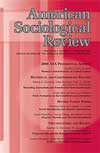 Social Isolation in America: Changes in Core Discussion Networks over Two Decades Social Isolation in America: Changes in Core Discussion Networks over Two Decades 
SCHOLARLY ARTICLE by McPherson, Smith-Lovin, and Brashears, American Sociological Review, June 2006 Have the core discussion networks of Americans changed in the past two decades? This study shows that between 1985 and 2004, the number of people saying there is no one with whom they discuss important matters nearly tripled. The mean number of "confidants" decreased by about a third (one confidant), and the modal respondent now reports having no confidant, whereas the modal respondent in1985 had three confidants. Though the data may overestimate the number of social isolates, these shrinking networks do reflect an important social change in America. |
 |
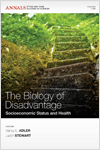 Socio-economic differentials in peripheral biology: Cumulative allostatic load Socio-economic differentials in peripheral biology: Cumulative allostatic load 
Bruce S. McEwen and Peter J. Gianaros This piece focuses on evidence linking socio-economic status (SES) to “downstream” peripheral biology. Drawing on the concept of allostatic load, the authors examine evidence linking lower SES with greater cumulative physiological toll on multiple major biological regulatory systems over the life course. They conclude with a discussion of the question of interactions between SES (and other such environmental factors) and genetic endowment, and their potential consequences for patterns of physiological activity—an area of research that appears poised to contribute significantly to our understanding of how social conditions “get under the skin” to affect health and aging. |
 |
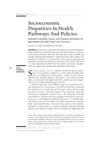 Socioeconomic Disparities In Health: Pathways and Policies Socioeconomic Disparities In Health: Pathways and Policies 
SCHOLARLY ARTICLE by Nancy E. Adler and Katherine Newman, Health Affairs, 2002 Socioeconomic status (SES) underlies three major determinants of health: health care, environmental exposure, and health behavior. In addition, chronic stress associated with lower SES may also increase morbidity and mortality. Reducing SES disparities in health will require policy initiatives addressing the components of socioeconomic status (income, education, and occupation) as well as the pathways by which these affect health. Lessons for U.S. policy approaches are taken from the Acheson Commission in England, which was charged with reducing health disparities in that country. |
 |
 Socioeconomic gradients in health in international and historical context Socioeconomic gradients in health in international and historical context 
William H. Dow and David H. Rehkopf This article places socioeconomic gradients in health into a broader international and historical context. The data presented supports the conclusion that current socioeconomic gradients in health within the United States are neither inevitable nor immutable. This literature reveals periods in the United States with substantially smaller gradients, and identifies many examples of other countries whose different social policy choices appear to have led to superior health levels and equity even with fewer aggregate resources. The article also sheds light on the potential importance of various hypothesized mechanisms in driving major shifts in U.S. population health patterns. A comparison with Canada suggests that exploring broad social policy differences, such as the weaker social safety net in the United States, may be a promising area for future investigation. |
 |
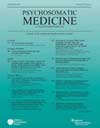 Socioeconomic Status, Race, and Diurnal Cortisol Decline in the Coronary Artery Risk Development in Young Adults (CARDIA) Study Socioeconomic Status, Race, and Diurnal Cortisol Decline in the Coronary Artery Risk Development in Young Adults (CARDIA) Study 
SCHOLARLY ARTICLE by Sheldon Cohen, PhD, et al, Psychosomatic Medicine, 2006 This study studied cortisol levels throughout the day to determine if there is an association with socioeconomic status (SES) and race, considering whether the difference could be explained by health practices, emotional and social factors. The study found that lower SES was associated in a graded fashion with a weaker decline in cortisol levels during the evening, independent of race. Blacks also showed a smaller cortisol decline at the end of the day, independent of SES, and unexplained by other factors.
Full article available online only with subscription. |
 |
 South Los Angeles Health Equity Scorecard (pdf) South Los Angeles Health Equity Scorecard (pdf) 
REPORT by A Park, N Watson, and L Galloway-Gilliam, Community Health Councils, Inc., December 2008 To assess the extent to which inequities in the healthcare and physical resource environments determine and shape the health of the South LA community, Community Health Councils collaborated with the Coalition for Health and Justice in a year-long study examining the healthcare and physical environment resources in the area. The resulting Scorecard takes into account multiple public and private policies that influence the resident health through investment—or lack of investment—in economic, education, housing, and healthcare systems. The Scorecard also identifies incremental steps by which South LA can be helped to achieve health equity.
|
 |
| « Prev 1 | 2 | 3 | 4 | 5 | 6 | 7 | 8 | 9 | 10 | 11 | 12 Next » |
|




